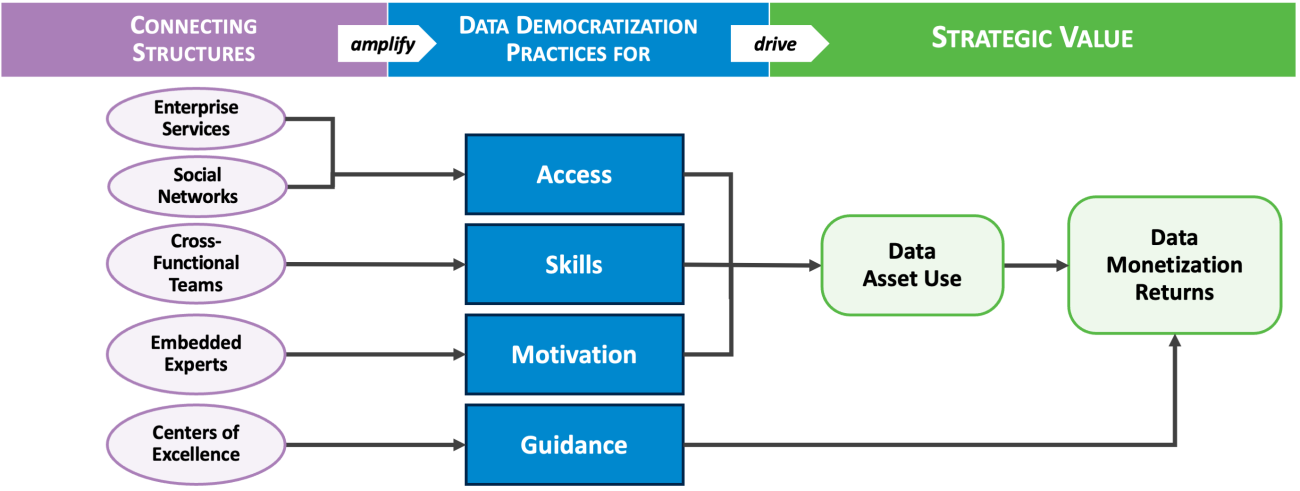MIT CISR research has shown that to achieve greater organizational agility, leaders must empower their teams with operational decision rights to identify new opportunities, analyze potential solutions, make well-informed decisions, and experiment with confidence.[foot]For more on how leaders can empower teams with operational decision rights, see Nick van der Meulen, “The Four Guardrails That Enable Agility,” MIT Sloan Management Review, Fall 2024 issue, https://sloanreview.mit.edu/article/the-four-guardrails-that-enable-agility/.[/foot] For such empowerment to succeed, however, organizations need to establish a data democracy as one of four decision rights guardrails. A data democracy is an organizational state whereby employees regularly and universally have (1) access to data assets, (2) the skills to exploit them, (3) the motivation to engage with them, and (4) guidance to use them strategically.[foot]A data asset is a cohesive set of data that is made readily usable.[/foot]
Achieving this state is a challenge for many organizations. Our latest research shows that, on average, only 28 percent of employees typically draw on reusable data assets such as data about customers, operations, process performance, and costs.[foot]This briefing reflects findings from the 2024 MIT CISR Data Monetization: Generating Financial Returns from Data and Analytics Survey (N=349). The survey was distributed globally from August 2023 to August 2024 to senior executives possessing an understanding of their organization’s enterprise-level data activities and outcomes.[/foot] Employees not using available data represent a costly gap, as it is data asset use that drives financial returns. In organizations where at least one-third of employees use data assets, data monetization initiatives account for 15 percent of total revenues; in organizations with less use, that figure is under 5 percent.
Most seasoned leaders know that the availability of data assets does not automatically lead to their use; achieving a data democracy requires intentional design. In this briefing, we outline a framework for driving data asset use based on democratization practices regarding access, skills, motivation, and guidance, and the connecting structures that amplify them.[foot]Connecting structures are organizational arrangements that facilitate knowledge exchange between data experts and domain experts. For an overview of the five connecting structures, see I. A. Someh and B. H. Wixom, “Data-Driven Transformation at Microsoft,” MIT CISR Research Briefing, Vol. XVII, No. 8, August 2022, https://cisr.mit.edu/publication/2017_0801_DataDrivenTransformation_SomehWixom.[/foot] By systematically investing in these practices and structures, organizations can increase the use of their available data assets and thereby maximize the value they realize from their data investments.











